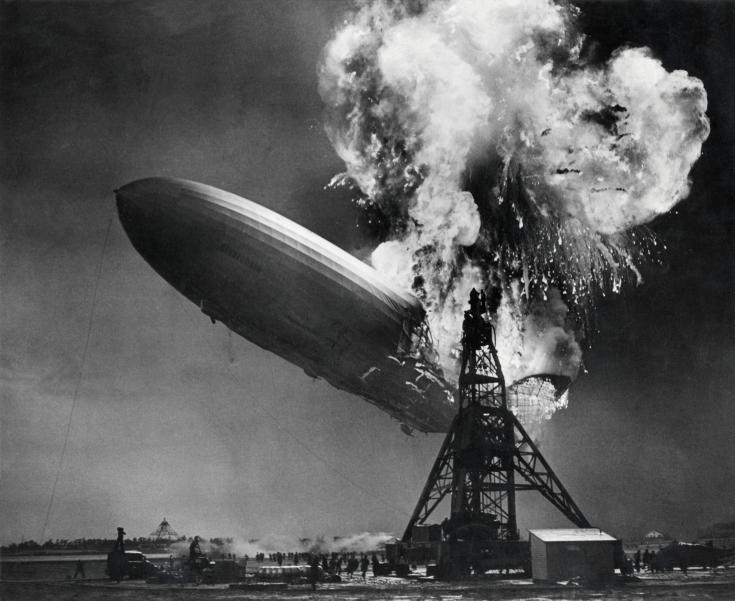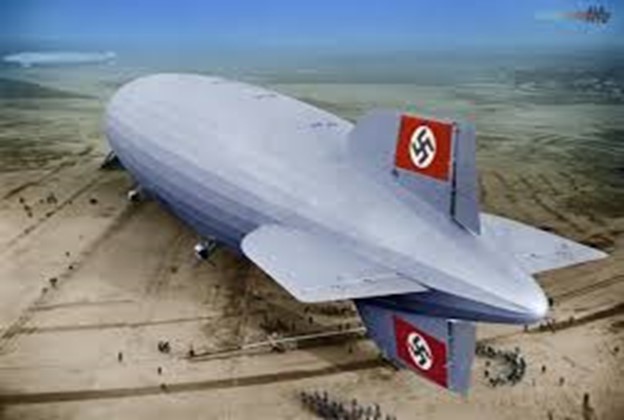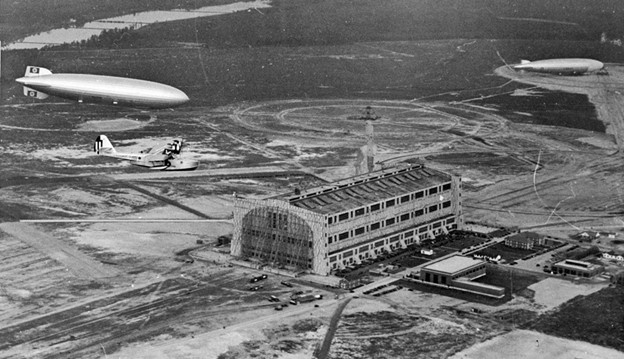The Hindenburg Disaster
Remembering The 85th Anniversary
Lakehurst, New Jersey, May 6, 1937

The airship Hindenburg, the largest dirigible ever built and the pride of Nazi Germany, bursts into flames upon touching its mooring mast in Lakehurst, New Jersey, killing 36 passengers and crew-members, on May 6, 1937.
‘Oh, The Humanity!’
Hindenburg Disaster newsreel paired with Herbert Morrison recording – YouTube
The Complete Hindenburg Disaster Radio Broadcast – YouTube
Hindenburg Disaster – Real Footage (1937) | British Pathé – YouTube
Filled with hydrogen gas—the most flammable element, the Hindenburg was referred to as the ‘Titanic of the sky’ for its exclusivity and luxury, but the reference became an ironic nightmare when it was ignited by what modern forensic research determined was a spark created when one of the airframe’s metal rods sheared off after a series of sudden turns, the Captain ordered to make up time on their schedule. And the name came to represent another modern-day disaster.
On May 3, 1937, the Hindenburg left Frankfurt, Germany, for a journey across the Atlantic to Lakehurst’s Navy Air Base. Stretching 804 feet from stern to bow, it carried 36 passengers and crew of 61.
While attempting to moor at Lakehurst, the airship suddenly burst into flames, probably after a spark ignited its hydrogen core. Rapidly falling 200 feet to the ground, the hull of the airship incinerated within seconds. Thirteen passengers, 21 crewmen, and 1 civilian member of the ground crew lost their lives, and most of the survivors suffered substantial injuries.
The Hindenburg was the pride of Hitler’s Nazi administration and wore the swastika on its tail.

Radio announcer Herb Morrison, who came to Lakehurst to record a routine voice-over for an NBC newsreel, immortalized the Hindenburg disaster in a famous on-the-scene description in which he emotionally declared, “Oh, the humanity!” The recording of Morrison’s commentary was immediately flown to New York, where it was aired as part of America’s first coast-to-coast radio news broadcast. Lighter-than-air passenger travel rapidly fell out of favor after the Hindenburg disaster, and no rigid airships survived World War II.
Hindenburg Disaster – Enhanced Audio – YouTube
This marked the end for most practical purposes of the age of the airship. Today we’ll still see deployed at big events, mostly as ‘The Goodyear Blimp’.
Besides the Hindenburg explosion, why aren’t they used any more:
- The main reasons that blimps are no longer used is because of the huge cost it takes to build and run.
- The ships need a large amount of helium – meaning one trip could cost £70,000.
- And it takes over 400 hours of training for pilots to be prepared to drive a blimp.
- According to the Federal Aviation Administration, only 128 people in the entirety of the United States are qualified to fly airships.
- Another reason there are so few blimps these days is because of the invention of drones.
- Blimps used to be used to capture images or footage from above – which can now be done with drones.
How much does a blimp cost?
The rough price for a large, certified blimp is $2-3Million.
Can we interest you in a used airship?


